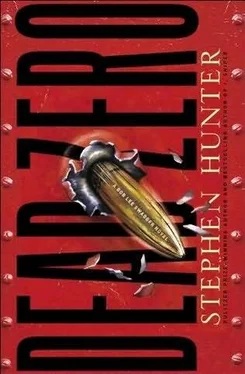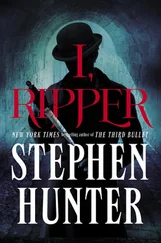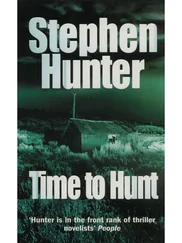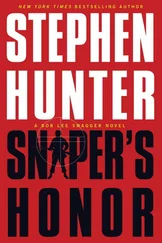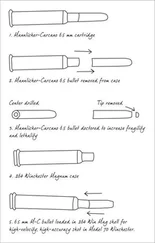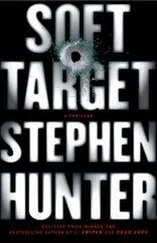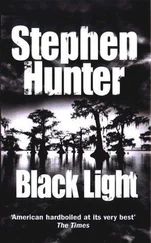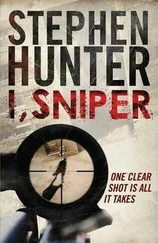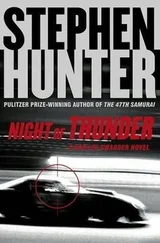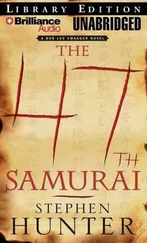“This is very troubling,” said Dr. Faisal. “Please, Bilal, I am begging you, another milk shake.”
OUTSIDE JACKSONVILLE, NORTH CAROLINA
0117 HOURS
Swagger drove through darkness, having long since left any trace of the suburbs. He was in some rural zone, off main highways, on ribbons of blacktop, coming now and then to stop signs but rarely to streetlights.
He’d gotten to his room, unsatisfied. What a wasted day. Nothing but banalities regarding the strange case of Ray Cruz and his threat to take out the new hope of the Afghan political scene, Ibrahim Zarzi, once known as “the Beheader.” Opening his laptop, he’d sent an e-mail more or less summing up the day to Memphis at FBI HQ. Then a late e-mail registered, stating only that no sightings of Ray Cruz had yet been confirmed, that the NIS canvassing of marine bases or other spots where he might be tempted to go to ground had yielded no new information, but that some new stuff had come in from various parts of the background investigation of Cruz, and photocopies had been FedExed to Swagger. He called the desk, the package was located, and he went down to pick it up.
Not much. His eyes ran over the reports from various agents who’d been interviewing Cruz associates at marine bases the nation over, all of it confirming exactly what the men of 2-2 Recon had been telling him today. It seemed to add up to nothing. But… there was a curiosity. It seemed that someone had dug out a letter Cruz had sent to the Energy Department upon returning from his second tour in Iraq in 2004. The Energy Department was known to deploy extremely sophisticated SWAT teams at nuclear facilities the country over, and Cruz, evidently a little worn down from a year’s hard combat in and around Baghdad, dodging IEDs and seeing the effects on those who did not manage to dodge the IEDs, had succumbed to the generalized despair of the presurge environment. Who could blame him? Everybody had. So Ray, in a moment of weakness, had thoughts of leaving the corps before his twenty and taking up as a firearms and tactics instructor with Energy. The pay was said to be high, he’d come in at a high GS grade, and he’d be in one place for a long time doing what he loved to do, without anybody attempting to blow him up with a bomb disguised as a pile of dog shit.
The Energy people, anxious to get someone as well qualified as Ray on their team, had written back enthusiastically and invited him to contact this officer at this number for further discussion of employment opportunities. Evidently Ray never had, had resigned himself to another few years, and then Bush’s surge kicked in and morale soared as the killings went down. Final score: Us 1, them other guys 0. He’d gone on to another tour in Baghdad before the tour in Afghanistan, which had been terminated under such unusual circumstances.
But included in the xeroxography of the correspondence was a curriculum vitae in which Ray listed his accomplishments and his credentials. It was clearly meant for civilian eyes only. It indicated that he was investigating something, on his own dime, that was heretical at that moment to marine doctrine.
Ray listed courses he’d taken under the heading “Civilian Schools Attended,” and they included such learning adventures as Advanced Sniper Techniques and Team Entry Techniques and Team Communication Techniques at several companies, including Graywolf, which had a training division in Moyock, North Carolina, and others such as the confusingly titled Gunsite and Frontsite training facilities in Arizona and Thunder Ranch in Oregon under an ex-marine of excellent reputation named Clint Smith. But the one that leaped out at Bob was a week-long course in Urban Sniper Operations, offered by Steel Brigade Armory, of Danielstown, South Carolina, under the tutelage of a Colonel Norman S. Chambers, USMC (Ret.).
That name was familiar, and so Swagger did a quick Google on Chambers. What he learned provoked him: Apostate! Heretic! Defier! Enemy of the Jesuitical code of the Marine Corps Sniper Program! Chambers actually had not come out of the program at all. Instead he’d been straight infantry with time at the Command and Staff School at Leavenworth; he was a combat leader, not a sniper acolyte, which meant he wasn’t bent double under its doctrine. He was the critical outlier, the Billy Mitchell of sniping, who felt free to scorn the doctrinaires, at the same time risking the reputation of bitter wannabe, failure, whatever. Among his apostasies: he hated the M14 and thought the idea of welding up the old battle horse of the early sixties into a sniper rifle for the war on terror was a waste of time. He had been right on that one, and the corps, though it dug a great many of the old beauties out of mothballs for accurizing and scope fitting at the dawn of the war, soon learned the hard way that the zero on such a jerry-built assemblage would go wrong, and would never consistently deliver the accuracy at long range that would justify the careful and expensive training a sniper would get. Chambers also saw the M40 system-an iteration of the Army’s M24 system, which was a highly accurized Model 700 Remington with a Kreiger barrel and Schmidt & Bender or U.S. Optics on top-as stopgap at best.
Chambers was an exponent, outspoken and sometimes brutal and mocking, of the SASS, or semiautomatic sniper system. His weapon of choice for general issue to marine sniper teams was the Knight’s Armament SR-25, as derived from the original ArmaLite AR-10. In fact, both the SR-25 and the common infantryman’s M16/M4 rifles had common ancestry in the AR-10, which, designed in the late fifties by Eugene Stoner and some aerospace hotshots at Fairchild Aircraft, had seemed like some kind of plastic ray gun from outer space. But its profile-the straight-line design, the rakish pistol grip, the magazine well just forward of it, the need for high sights either optical or concealed in a carrying-handle assembly, plastic foregrip with ventilations, triangular front sight and flash hider at the muzzle-had become the basis of the Western combat small arm of the last half of the twentieth century. Chambers pushed hard for the adoption of the SR-25, once it had been proven in competition, courtesy of the Army Marksmanship Unit in the nineties, signifying that a semiauto or full-auto weapon was capable of the accuracy a bolt gun routinely produced.
Chambers argued, generally within the pages of arcane publications like Precision Shooting, The Infantry Journal, or Defense Review, that the advantages of an SASS far outweighed the advantages of the bolt gun. It allowed the sniper to engage multiple targets in near simultaneous real time; it allowed for fast follow-up shots when windage or mirage caused a miss; it gave the squad another fire point in a fight, should one develop; and it also allowed the sniper, using battle sights appended to his scope in the form of a diagonally mounted micro red dot, to become essentially a BAR man, bringing heavy volume of fire if the hadjis got inside the wire, where the bolt gun was all but useless. Moreover, the Russians had proved the system in combat since 1963, when they first fielded their Dragunov SVD in Vietnam against American troops-the CIA had somehow obtained an early one-and later, very successfully, in wars in Africa, South America, Indonesia, Afghanistan, and Chechnya.
Against that he chalked up only minor disadvantages: one was that the ejecting brass case, sailing through the air, was a tell as to the sniper’s position, but Chambers could find no actual evidence that such an ejecting case had ever given away a sniper’s hide in combat, much less with any regularity. The second was the gun’s ungainliness: unlike the bolt gun, it was fairly deep and denser for its size. It had to be monitored constantly as, fired heavily, its zero was subject to disengagement. It would tempt commanders to deploy it as a kind of squad automatic weapon instead of allowing it its full tactical potential as a long-range-out to a thousand or so meters-precision instrument.
Читать дальше
